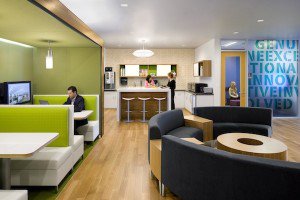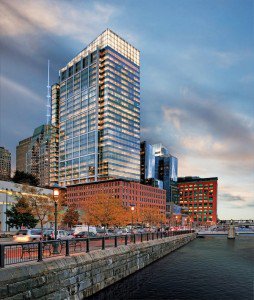By Yardi Blog Staff on July 18, 2013 in News

A thirst for improved building performance, coupled with growing awareness of the planet’s limited resources, have contributed to a new series of impressive commercial developments that boast highly efficient environments as well as reduced carbon footprints. The U.S. Green Building Council (USGBC) has played a major part in the worldwide growth of the green building movement. Now, USGBC is preparing the launch of the next version of its Leadership in Energy and Environmental Design system, LEED v4.
Through its many programs and green initiatives, USGBC seeks to provide eco-minded developers with actual data, knowledgeable perspectives and insight on the greening process with the sole purpose of helping them build communities that are environmentally sensitive, energy-efficient and ultimately enhance quality of life.
LEED applies to a broad range of projects, from single-family homes to office buildings, multifamily, healthcare and industrial outfits. Essentially, it provides third-party verification that a building or community was designed and built around green principles. Using strict parameters, LEED measures metrics such as energy savings, water efficiency, CO2 emissions, materials and resources, indoor air quality, and the overall environmental impact of a project.
In addition to promoting healthy living and sustainable design, LEED provides developers and property owners with tools to increase asset value, lower operating costs and even qualify for money-saving incentives, like tax rebates and zoning allowances.
Lower energy and water bills, increased comfort, reduced greenhouse gas emissions, less exposure to indoor pollutants and toxins, and lower maintenance costs are just a few of the benefits associated to living in a LEED-certified environment.
LEED v4 continues USGBC’s mission to spur transformation of the built environemnt toward zero-energy green buildings, while also providing a new suite of features designed to help streamline the certification process. Changes from LEED 2009 are seen in three main categories: new market secors, increased technical rigor and streamlined services.

Ultimately, the rating system is expected to become even more practical and serve as a viable platform for tomorrow’s green building projects.
Nearly 100 building projects across the globe have already joined the beta version. The project teams are helping USGBC validate and improve LEED v4 implementation and testing support resources such as reference guide content and LEED Online forms. USGBC’s goal is to polish up the LEED user experience during this beta period, before LEED v4’s official launch, based on feedback and input from the beta project teams.
“I appreciate that the new LEED reference guide incorporates all the different documents,” said Chloe Bendistis, Sheward Partnership, working on Humanscale’s San Francisco office and showroom and two projects with University Place Associates in Philadelphia, including its new headquarters.
“The LEED v4 reference guide includes campus guidance, district thermal energy guidelines and scenarios that might impact retail, healthcare or hospitality. It’s helpful to have all of these pieces together in one place.”
The beta version is currently open, and USGBC is encouraging additional projects to sign up. To register, contact Chrissy Macken at [email protected].
LEED v4 is expected to publicly launch this fall at USGBC’s annual Greenbuild International Conference and Expo.
Images courtesy of The U.S. Green Building Council official website


